
by Michael Zahalsky | Sep 10, 2024 | Kidney Health, Urinary Tract Infections, urology news
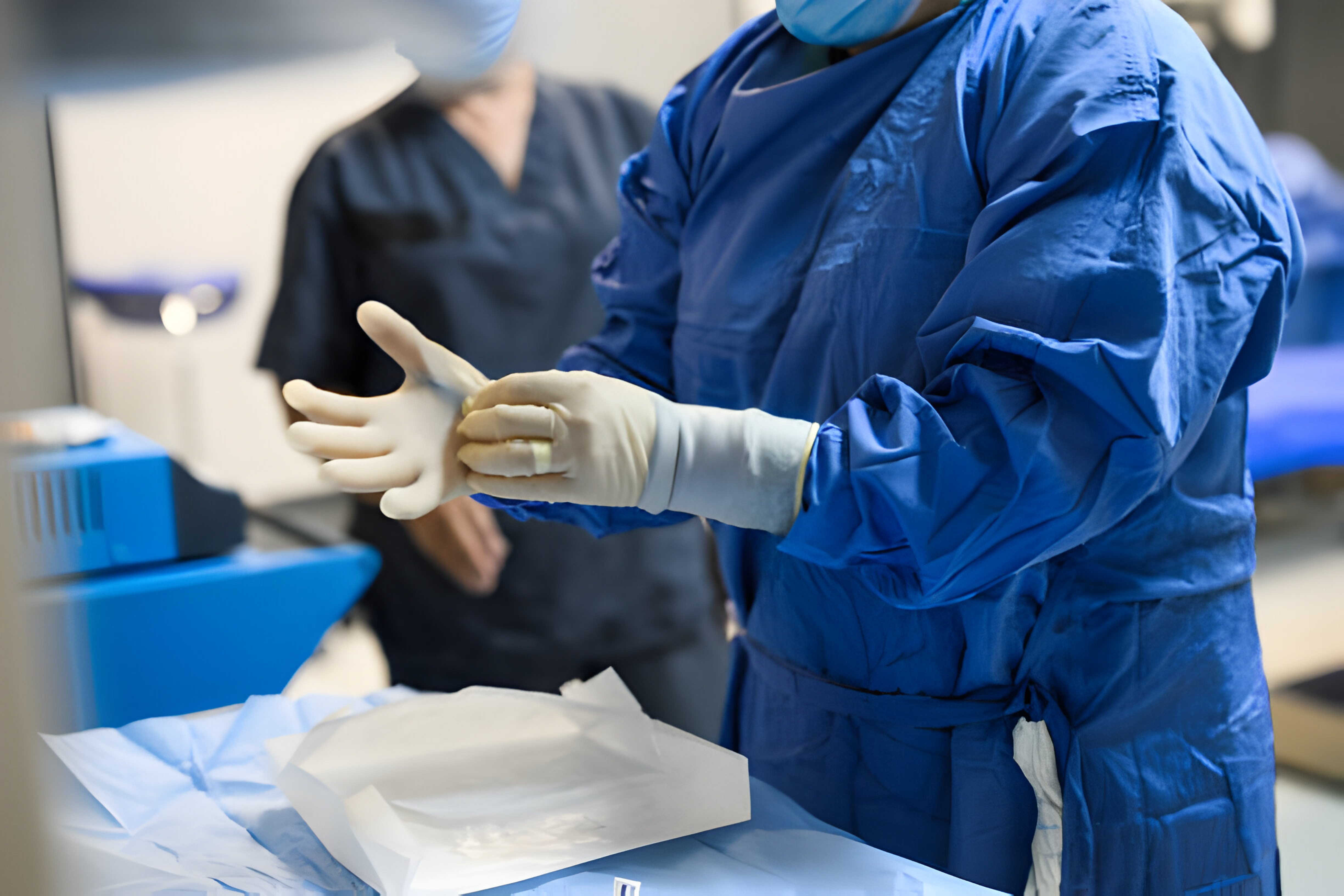
Everything You Need to Know About TURP Surgery: A Comprehensive Guide
Are you struggling with urinary issues caused by an enlarged prostate? Many men experience these problems as they age, and it can lead to discomfort, frustration, and disruptions to daily life. Fortunately, there’s an effective solution available—Transurethral Resection of the Prostate (TURP). This minimally invasive surgery offers relief by addressing the root cause of the problem: the overgrown prostate tissue pressing against the urethra.
At Z Urology, we specialize in performing TURP surgeries with precision and care, serving the vibrant communities of Coral Springs and Parkland, Florida. If you’re experiencing the symptoms of an enlarged prostate, also known as benign prostatic hyperplasia (BPH), TURP could be the answer you’ve been searching for. In this guide, we’ll explore everything you need to know about the procedure, from how it works to what to expect during recovery.
What Is TURP Surgery?
TURP, or Transurethral Resection of the Prostate, is a surgical procedure designed to treat urinary symptoms caused by an enlarged prostate. The prostate gland, which sits just below the bladder and surrounds the urethra, can enlarge as men age, often leading to difficulty urinating. By removing the excess prostate tissue, TURP opens the urethra, allowing urine to flow freely and alleviating symptoms.
Unlike traditional surgeries, TURP doesn’t involve any external incisions. Instead, the surgeon accesses the prostate through the urethra, which makes it a minimally invasive option with quicker recovery times.
Why Do You Need TURP Surgery?
Men with benign prostatic hyperplasia (BPH), a common condition where the prostate becomes enlarged but is not cancerous, are ideal candidates for TURP. When BPH causes severe urinary symptoms or when medications fail to provide relief, TURP becomes the go-to solution.
At Z Urology, our skilled team of urologists recommends TURP if you’re experiencing:
- Difficulty starting or stopping urination
- Frequent need to urinate, especially at night
- Weak urine stream or a feeling of incomplete bladder emptying
- Inability to urinate (urinary retention)
When left untreated, BPH can lead to more severe issues, including urinary tract infections, bladder stones, and even kidney damage. TURP can help prevent these complications and significantly improve your quality of life.
How TURP Surgery Works
TURP surgery is performed using a specialized instrument known as a resectoscope. This tool is inserted through the urethra, eliminating the need for external incisions. The resectoscope is equipped with a light, camera, and a loop of wire that allows the surgeon to remove small pieces of prostate tissue that are obstructing the urethra.
Step-by-Step Process of TURP Surgery:
- Anesthesia: TURP is performed under general or spinal anesthesia, depending on the patient’s preference and medical condition.
- Insertion of Resectoscope: Once you’re sedated or numbed, the surgeon will insert the resectoscope through the penis and into the urethra.
- Prostate Tissue Removal: The surgeon uses a wire loop on the resectoscope to cut away the excess prostate tissue causing the obstruction.
- Flushing the Area: The removed tissue is flushed into the bladder with a saline solution and then removed from the body.
- Catheter Placement: After the procedure, a catheter is placed in the bladder to help drain urine while the prostate heals.
At Z Urology, we also offer a Button TURP procedure, a modern alternative that vaporizes prostate tissue using a button-shaped device. This advanced technique minimizes bleeding and speeds up recovery, ensuring patients return to their regular routines as soon as possible.
Why Choose TURP Surgery Over Other Treatments?
When it comes to treating an enlarged prostate, TURP is often considered the gold standard. Medications are often the first line of treatment, but for many men, they may not offer enough relief. TURP surgery provides long-lasting results, often resolving urinary symptoms for years without the need for ongoing medication.
While there are other minimally invasive therapies available—such as UroLift or Rezum—TURP remains one of the most effective options, especially for men with moderate to severe symptoms of BPH.
The Benefits of TURP Surgery
Patients who undergo TURP surgery typically experience a significant improvement in urinary function and a reduced need for medications. The benefits of TURP include:
- Quick Symptom Relief: Most patients notice improvements in their urinary symptoms within days or weeks after the procedure.
- No External Incisions: Because TURP is performed through the urethra, there are no visible scars or external wounds to heal.
- Long-Lasting Results: TURP offers a permanent solution for most men, with many patients enjoying relief from their symptoms for 15 years or longer.
- Short Hospital Stay: TURP usually requires only a brief hospital stay of 1 to 3 days, allowing you to return home quickly to recover.
What to Expect Before and After TURP Surgery
Pre-Operative Preparation
Before undergoing TURP surgery, your healthcare provider will conduct a thorough evaluation to ensure you are a good candidate for the procedure. Here’s what you can expect in the days leading up to your surgery:
- Medical History and Examination: Your doctor will review your medical history and perform a physical examination to assess your overall health.
- Pre-Surgery Tests: You may need to undergo blood tests, urinalysis, or an electrocardiogram (EKG) to ensure your body is ready for surgery.
- Medication Adjustments: Certain medications, such as blood thinners, may need to be temporarily discontinued before surgery to reduce the risk of excessive bleeding.
- Fasting Instructions: Your doctor will likely instruct you not to eat or drink anything for a few hours before surgery.
At Z Urology, we make sure every patient receives personalized care and clear instructions to prepare for their TURP surgery.
Post-Operative Care and Recovery
After the TURP procedure, most patients spend 1 to 3 days in the hospital to monitor their recovery. During this time, a catheter will be inserted into your bladder to drain urine while your prostate heals. You can expect to see some blood in your urine after surgery, but this should decrease over time.
Once you return home, following these guidelines can help speed up your recovery:
- Stay Hydrated: Drink plenty of fluids to flush out any remaining blood or clots from your bladder.
- Avoid Strenuous Activity: Refrain from heavy lifting, intense physical activity, or driving for at least 2 weeks after surgery.
- Manage Pain: You may experience some mild discomfort, which can be managed with over-the-counter pain medications as recommended by your doctor.
While most patients resume their normal routines within a few weeks, full recovery may take up to 6 weeks. Your urologist at Z Urology will provide you with personalized instructions to ensure a smooth recovery process.
Potential Risks of TURP Surgery
Although TURP is a safe and effective procedure, like any surgery, it comes with potential risks. At Z Urology, our team takes every precaution to minimize complications and provide optimal care. Some possible risks include:
- Infection: While rare, there’s always a slight risk of infection after surgery.
- Bleeding: Minor bleeding is common but usually resolves within a few days.
- Retrograde Ejaculation: This occurs when semen enters the bladder instead of exiting through the penis. While this condition doesn’t typically affect sexual function, it can impact fertility.
- Bladder Injury: In rare cases, damage to the bladder or surrounding structures can occur during surgery.
Our team will review these risks with you before the procedure to ensure you feel confident and informed about your treatment options.
Choosing Z Urology for TURP Surgery
When it comes to your health, you want to place your trust in experienced, compassionate professionals. At Z Urology, we pride ourselves on delivering the highest quality urological care. Here’s why we are the top choice for TURP surgery in Coral Springs and Parkland, Florida:
- Experienced Team: Our board-certified urologists have years of experience performing TURP surgeries, ensuring precise, effective results.
- Advanced Technology: We utilize cutting-edge equipment, including Button TURP, for quicker recovery and fewer side effects.
- Patient-Focused Care: At Z Urology, we prioritize your comfort and well-being. We listen to your concerns, answer your questions, and create personalized treatment plans tailored to your unique needs.
Take Control of Your Health with Z Urology
If you’re suffering from the symptoms of an enlarged prostate, don’t wait to seek treatment. TURP surgery could offer the relief you need to regain control of your life. Contact Z Urology today to schedule a consultation and learn more about how our expert team can help you achieve lasting improvements in your urinary health.
Contact Z Urology Today:
- Phone: (954) 714-8200
- Email: info@zurology.com
- Coral Springs Office: 5850 Coral Ridge Drive, Suite 106, Coral Springs, FL 33076
- Parkland Office: 9970 N Central Park Blvd, Suite 402, Boca Raton, FL 33428
Let Z Urology guide you on your journey to better urological health!

by Michael Zahalsky | Sep 3, 2024 | Optilume, urology news

Understanding the Optilume Treatment for Urethral Strictures
Urethral strictures, a condition characterized by the narrowing of the urethra, can cause significant discomfort and disrupt normal urinary function. One of the latest advancements in treating this condition is Optilume, a procedure that has sparked considerable interest due to its effectiveness and minimally invasive nature. But many patients wonder, “Is Optilume an implant?” In this article, we’ll break down what Optilume is, how it works, and why it stands out as a solution for urethral strictures.
What is Optilume?
Optilume is not an implant, but rather a drug-coated balloon dilation system used to treat urethral strictures. The procedure involves inserting a balloon catheter into the affected part of the urethra. Once in place, the balloon is inflated to dilate the narrowed urethral area, and paclitaxel, a drug used to prevent tissue regrowth, is released directly to the stricture. This combination of mechanical dilation and localized drug delivery provides long-lasting relief and helps reduce the risk of the stricture returning.
Understanding Urethral Strictures
Before diving deeper into how Optilume works, it’s essential to understand what urethral strictures are. The urethra is the tube that carries urine from the bladder out of the body. When the urethra becomes narrow or blocked, it can cause symptoms like:
- Difficulty starting urination
- Weak or interrupted urine flow
- Frequent urinary tract infections
- Pain during urination
- In severe cases, total urinary retention
Urethral strictures can result from trauma, surgery, infections, or chronic inflammation. Traditional treatments include urethral dilation or surgery, but these approaches often come with high recurrence rates.
How Does Optilume Work?
Unlike implants, which are devices or materials left permanently inside the body, Optilume is a temporary medical tool used during a minimally invasive procedure. Here’s how it works:
- Balloon Dilation: A small catheter with a balloon at its tip is inserted into the urethra. The balloon is inflated at the site of the stricture, widening the narrowed area.
- Drug-Coated Technology: The balloon is coated with paclitaxel, a medication that inhibits cell growth. When the balloon inflates, it releases paclitaxel directly to the urethral wall, which helps prevent scarring and the recurrence of the stricture.
- Non-Implant Procedure: After the balloon does its job, it is deflated and removed from the body, leaving no permanent material behind.
Benefits of Optilume for Urethral Strictures
Optilume is gaining popularity as a groundbreaking treatment for urethral strictures. Here’s why patients and urologists alike are excited about its benefits:
- Minimally Invasive: The Optilume procedure is done on an outpatient basis, with no incisions, stitches, or implants required. Most patients can resume normal activities within a few days.
- Reduced Recurrence Rates: Clinical trials show that Optilume significantly reduces the chances of stricture recurrence compared to traditional dilation alone.
- Less Pain and Faster Recovery: Since the procedure is minimally invasive and does not involve cutting or stitching, patients experience less pain and recover more quickly than with surgery.
- Long-Lasting Results: Thanks to the combination of balloon dilation and paclitaxel drug delivery, many patients enjoy long-term relief from their urethral stricture symptoms.
Is Optilume Right for You?
Urethral strictures can vary in severity and cause, so not every treatment option is suitable for every patient. However, Optilume is often recommended for individuals who:
- Have recurrent urethral strictures after previous treatments like dilation or urethroplasty.
- Are looking for a minimally invasive alternative to surgery.
- Want a faster recovery time and reduced downtime from work or daily activities.
To determine if Optilume is the right option for you, it’s important to consult with a qualified urologist, such as the experts at Z Urology.
Z Urology: The Premier Destination for Urethral Stricture Treatments
At Z Urology, we are dedicated to providing the latest and most effective treatments for urological conditions. Located in Coral Springs and Parkland, Florida, we pride ourselves on offering advanced solutions like Optilume for patients suffering from urethral strictures.
Why Choose Z Urology?
- Expertise and Experience: Our team of board-certified urologists has extensive experience diagnosing and treating urethral strictures. We stay up-to-date on the latest advancements in urology to offer our patients the best possible care.
- State-of-the-Art Technology: Z Urology utilizes cutting-edge technology, including Optilume, to provide minimally invasive treatment options with excellent outcomes.
- Personalized Care: Every patient is unique, and so is their treatment. At Z Urology, we tailor our approach to meet your specific needs and concerns, ensuring you receive personalized, compassionate care.
- Comprehensive Urology Services: In addition to treating urethral strictures, we offer a full range of urological services, including prostate health, kidney care, bladder health, and more. Whether you’re dealing with a common or complex urological issue, Z Urology is here to help.
The Procedure: What to Expect
Optilume is performed as an outpatient procedure, meaning you can typically return home the same day. Here’s what you can expect during and after the treatment:
- During the Procedure: After administering local anesthesia or mild sedation, your urologist will insert the Optilume catheter into the urethra. The balloon is inflated to open the stricture, and paclitaxel is released. The entire process takes less than 30 minutes.
- After the Procedure: Most patients experience mild discomfort but can resume normal activities within a few days. There’s no need for an extended hospital stay, and complications like bleeding or infection are rare.
- Follow-Up: A follow-up appointment with your urologist will be scheduled to ensure the procedure was successful and discuss any additional care needed.
The Future of Urethral Stricture Treatment
Optilume represents a significant advancement in the treatment of urethral strictures. The combination of mechanical dilation and drug therapy offers patients a minimally invasive, effective solution without the need for an implant. With its lower recurrence rates and quicker recovery times, Optilume is quickly becoming the gold standard in urethral stricture treatment.
At Z Urology, we are committed to staying at the forefront of urological care. Our team is proud to offer innovative treatments like Optilume to help our patients achieve better health and improved quality of life.
Take the First Step Towards Relief Today
If you’re experiencing the discomfort and inconvenience of a urethral stricture, Optilume may be the solution you’ve been seeking. Don’t let your symptoms control your life—contact Z Urology today to schedule a consultation and learn more about this groundbreaking treatment.
At Z Urology, we’re committed to providing the expert care you need to live your life to the fullest.
Contact Information:
Phone: (954) 714-8200
Email: info@zurology.com
Coral Springs Location: 5850 Coral Ridge Drive, Suite 106, Coral Springs, FL 33076
Fort Lauderdale Location: 2001 NE 48th Court, Suite 2, Fort Lauderdale, FL 33308
Pompano Beach Location: 2901 Coral Hills Drive, Suite 370, Pompano Beach, FL 33065
Miami Location: 8585 Sunset Drive, Suite 105, Miami, FL 33143
Take control of your urological health with Z Urology, your trusted partner for comprehensive care across Coral Springs, Parkland, Fort Lauderdale, Pompano Beach, and Miami.
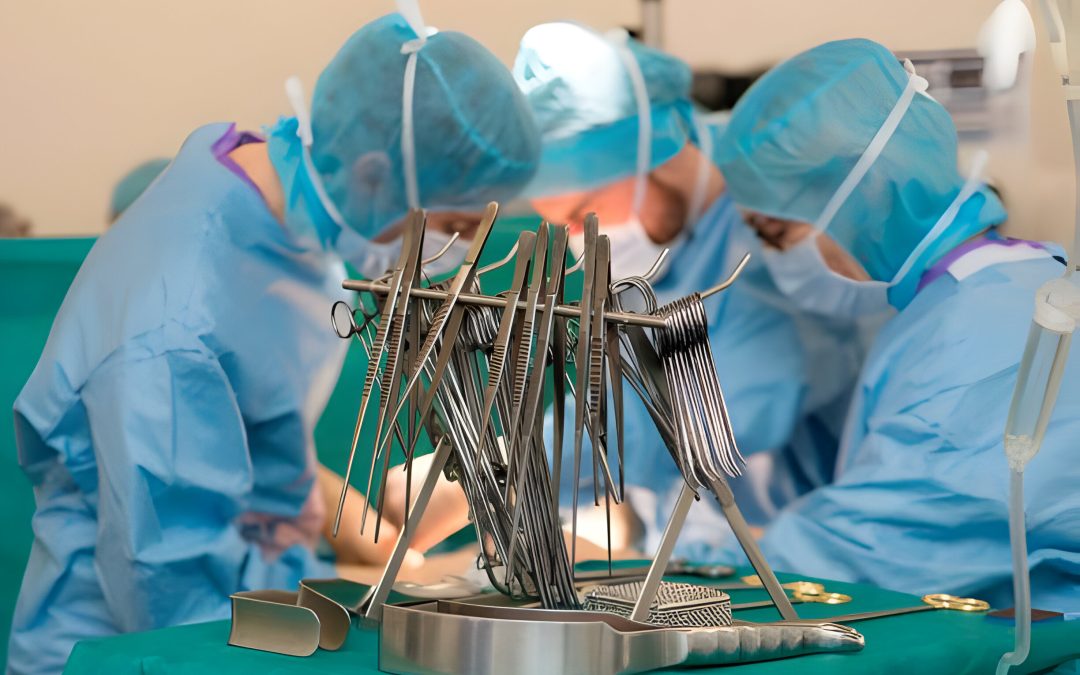
by Michael Zahalsky | Aug 27, 2024 | Urinary Tract Infections, urology news
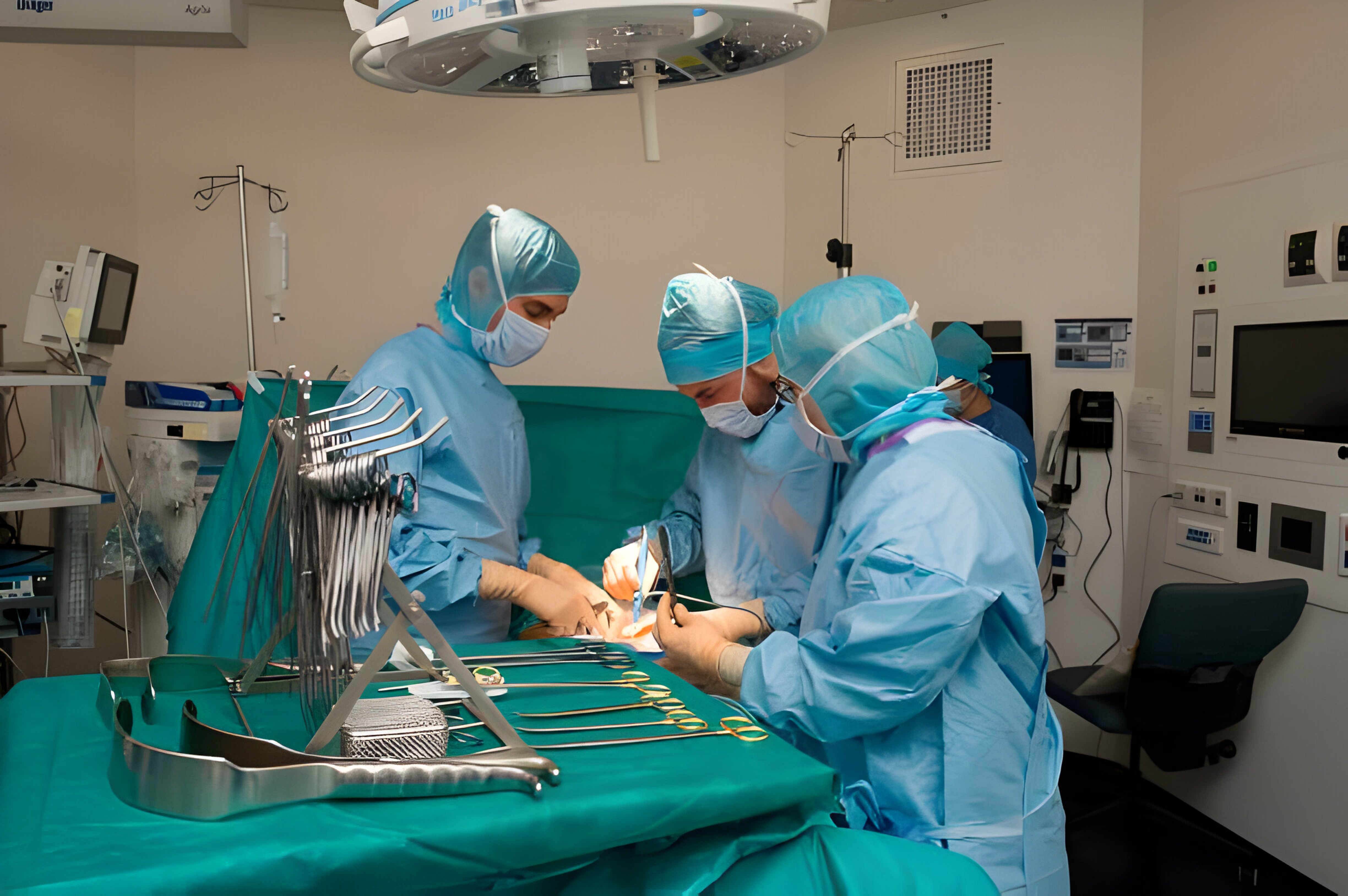
Recovering from Ureteral Reimplantation Surgery: What to Expect and How Z Urology Can Help You Heal
Ureteral reimplantation surgery is a crucial procedure for patients suffering from urinary tract issues, particularly vesicoureteral reflux (VUR). Whether caused by congenital abnormalities or complications from infections, VUR can lead to serious kidney damage if not treated promptly. At Z Urology, we are committed to providing our patients with expert care and support throughout their surgical journeys. One of the most common questions we encounter is, “How long is recovery from ureteral reimplantation surgery?” This article will explore the recovery process in detail, offering guidance and tips to ensure a smooth and successful healing period.
What is Ureteral Reimplantation Surgery?
Before delving into recovery timelines, it’s important to understand what ureteral reimplantation surgery entails. Ureteral reimplantation is a surgical procedure designed to correct the positioning of the ureters—the tubes that carry urine from the kidneys to the bladder. This surgery is often performed to treat VUR, a condition where urine flows backward from the bladder into the kidneys. If left untreated, this can lead to recurrent urinary tract infections (UTIs) and even kidney damage.
At Z Urology, our skilled surgeons perform ureteral reimplantation using advanced techniques that may involve traditional open surgery or minimally invasive laparoscopic methods. The choice of approach depends on the patient’s specific condition and overall health.
A Typical Recovery Timeline
1. Immediate Post-Surgery Phase (Days 1-3): After the surgery, most patients will stay in the hospital for 1 to 3 days, depending on their progress and the complexity of the procedure. During this time, medical staff will closely monitor the patient’s vital signs, manage pain, and ensure that the bladder is functioning properly. Patients may experience discomfort, including bladder spasms and burning sensations when urinating, which is normal during the early stages of recovery.
At Z Urology, we prioritize pain management and ensure that every patient has a customized plan in place to address their post-operative discomfort. Our team is dedicated to making sure you feel supported and comfortable during your hospital stay.
2. Early Recovery Phase (Week 1): Once discharged, patients are encouraged to rest at home and avoid strenuous activities. It’s common to experience increased frequency and urgency in urination, as well as minor blood in the urine. These symptoms typically subside within the first week.
Parents of young children who have undergone ureteral reimplantation should monitor their child’s activity levels closely, ensuring they avoid running, jumping, or any physical exertion that could strain the surgical site.
3. Intermediate Recovery Phase (Weeks 2-4): By the second to fourth week post-surgery, many patients begin to feel significantly better. The initial discomfort starts to diminish, and most patients can gradually resume normal daily activities. However, heavy lifting and vigorous physical activity should still be avoided.
Z Urology emphasizes the importance of follow-up appointments during this phase. These visits allow our team to assess your healing progress and address any lingering symptoms. It’s crucial to keep these appointments to ensure that your recovery stays on track.
4. Full Recovery Phase (Weeks 4-6 and Beyond): Complete recovery from ureteral reimplantation surgery usually takes about 4 to 6 weeks. During this time, the bladder and ureters heal, and the body adjusts to the new positioning of the ureters. Most patients are able to return to work or school within 1 to 2 weeks, but strenuous activities should be postponed until cleared by the surgeon.
For children, it’s especially important to prevent any physical activity that could disrupt healing. Activities such as bike riding, sports, and gym class should be avoided until your urologist confirms that it is safe to resume them.
At Z Urology, we provide detailed post-operative care instructions to ensure our patients can navigate their recovery smoothly. We are always available to address any concerns or questions that arise during this critical healing period.
Factors That Can Influence Recovery Time
Several factors can influence how long it takes an individual to recover from ureteral reimplantation surgery:
- Type of Surgery: Patients who undergo laparoscopic reimplantation may experience a faster recovery time than those who have open surgery, as the minimally invasive approach typically results in less tissue damage and quicker healing.
- Age: Children generally recover more quickly than adults, but they also require careful supervision to avoid activities that could compromise their recovery.
- Overall Health: Patients in good health with no underlying medical conditions tend to recover more rapidly. Conversely, those with preexisting conditions or weakened immune systems may experience a longer healing process.
- Post-Operative Care: Following post-operative instructions carefully, attending follow-up appointments, and managing pain effectively can all contribute to a smoother recovery.
Z Urology’s Approach to Post-Surgical Care
At Z Urology, we understand that every patient’s recovery journey is unique. That’s why we take a personalized approach to post-surgical care. Our comprehensive support doesn’t end when the surgery is over. We stay with you every step of the way to ensure a successful recovery.
- Customized Pain Management: Managing pain effectively is key to a smooth recovery. Our urologists will work with you to develop a pain management plan that fits your specific needs. This may include medications, physical therapy, and lifestyle adjustments.
- Monitoring and Support: Regular follow-up appointments allow us to monitor your progress and address any issues that arise. We encourage open communication during this time, and our team is always available to provide guidance and reassurance.
- Patient Education: We believe that informed patients are empowered patients. At Z Urology, we provide detailed post-operative care instructions and educational resources to help you understand what to expect during your recovery.
Trust Z Urology for Your Urological Care
Recovering from ureteral reimplantation surgery requires patience and careful management, but with the right medical team by your side, you can navigate this journey with confidence. At Z Urology, we are proud to be the trusted choice for urological care in Coral Springs, Parkland, and beyond. Our commitment to excellence, patient-centered approach, and cutting-edge technology ensure that you receive the highest quality of care from start to finish.
If you or a loved one is facing ureteral reimplantation surgery or any other urological procedure, don’t hesitate to reach out to Z Urology. Our experienced team is here to guide you every step of the way, ensuring that your recovery is smooth and successful.
Contact us today to schedule a consultation and learn more about how we can help you achieve optimal urological health.
Phone: (954) 714-8200
Email: info@zurology.com
Website: Z Urology
Let Z Urology be your partner in health—because when it comes to your well-being, you deserve nothing less than the best.
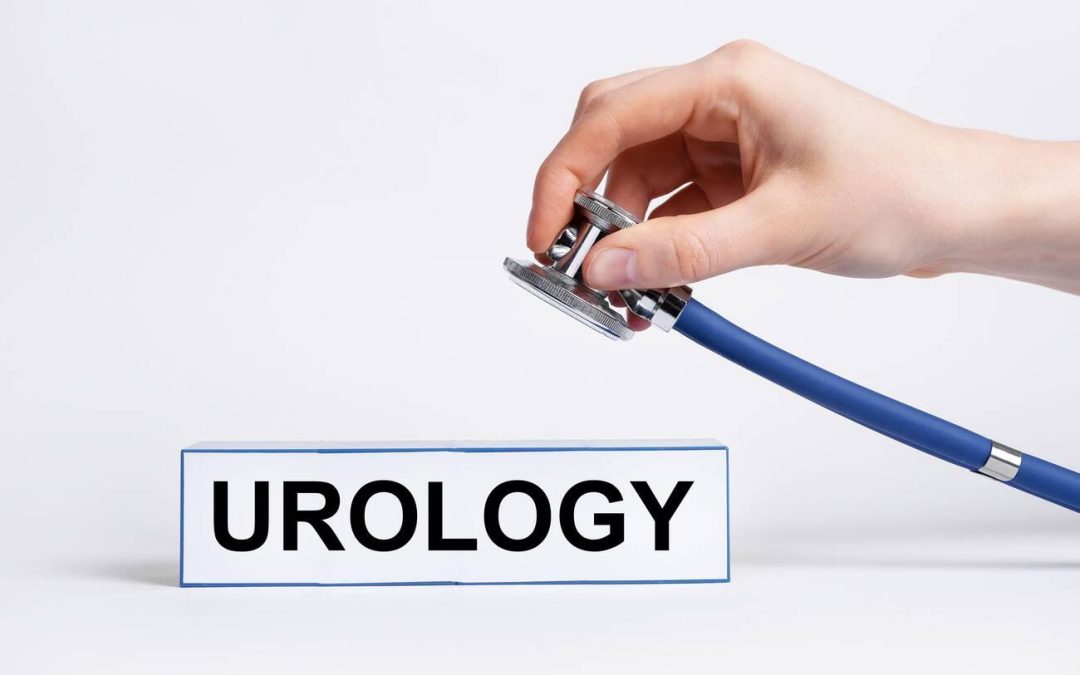
by Michael Zahalsky | Aug 20, 2024 | urology news
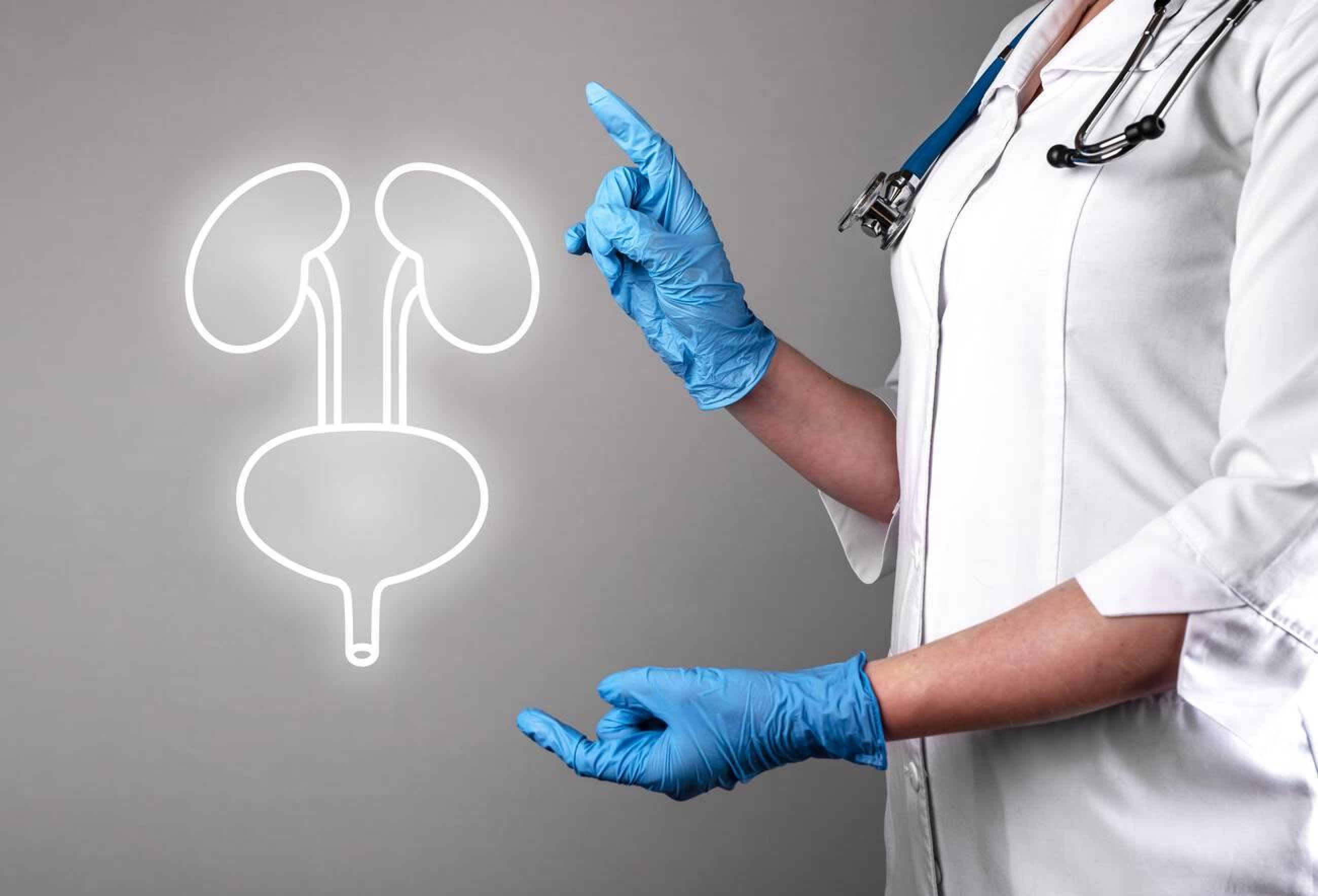
A Comprehensive Look to Bladder Mesh with Z Urology
Bladder mesh, a common solution for conditions like stress urinary incontinence (SUI) and pelvic organ prolapse (POP), has garnered attention due to concerns about its safety. While it has transformed the lives of many, others have faced complications. At Z Urology, located in Coral Springs and Parkland, Florida, we understand the importance of making informed decisions about your urological health. This article delves into the safety of bladder mesh, its applications, potential risks, and why Z Urology is the trusted choice for your urological care.
What is Bladder Mesh and How is It Used?
Bladder mesh, also known as transvaginal mesh, is a medical device used in surgical procedures to treat SUI and POP. SUI occurs when the pelvic floor muscles weaken, leading to urine leakage during activities like coughing, sneezing, or exercising. POP, on the other hand, is a condition where the pelvic organs drop from their normal position, often due to weakened muscles and tissues.
Bladder mesh is often used in a “sling” procedure, where the mesh is placed under the urethra or bladder neck to provide support. This support helps prevent urine leakage and restores the normal anatomy of the pelvic organs. While the procedure can be life-changing for those suffering from SUI or POP, it is not without risks.
The Benefits of Bladder Mesh
Bladder mesh has been a transformative solution for many patients dealing with stress urinary incontinence (SUI) and pelvic organ prolapse (POP). One of its primary benefits is the long-lasting support it provides. The mesh acts as a durable reinforcement for weakened pelvic floor muscles, significantly reducing the likelihood of recurring issues like SUI or POP. This durability ensures that patients can enjoy sustained relief from their symptoms, often without the need for further interventions.
Another key advantage of bladder mesh is the minimally invasive nature of the procedure. Unlike traditional surgeries that may require extensive incisions and longer recovery periods, the sling procedure involving bladder mesh is typically less invasive. This approach leads to shorter recovery times, allowing patients to get back to their normal activities more quickly. Additionally, the reduced invasiveness of the surgery often results in less post-operative pain, making the overall experience more manageable and less daunting for patients.
The high success rates associated with bladder mesh procedures are also worth noting. Many patients who undergo this treatment experience a significant improvement in their symptoms, which can be life-changing. The restoration of bladder control and pelvic support enables patients to return to a more active and comfortable lifestyle, free from the limitations and discomfort previously caused by SUI or POP. This combination of effectiveness, reduced recovery time, and sustained results makes bladder mesh an appealing option for many individuals seeking relief from these common urological issues. At Z Urology, we leverage this proven treatment to help our patients achieve better health and an improved quality of life.
The FDA’s Stance on Bladder Mesh
In recent years, the U.S. Food and Drug Administration (FDA) has taken significant steps to address concerns about bladder mesh. In 2019, the FDA ordered manufacturers to stop selling transvaginal mesh products intended for the repair of POP, citing safety concerns and the lack of evidence supporting their long-term effectiveness.
However, it’s important to note that the FDA’s action primarily targeted mesh used in POP repair when implanted through the vagina. Mesh products used in the treatment of SUI, such as bladder slings, were not included in this ban. The FDA continues to monitor the safety of these devices and encourages patients to discuss the risks and benefits with their healthcare providers.
Why Choose Z Urology for Bladder Mesh Procedures?
When it comes to your urological health, choosing the right provider is crucial. At Z Urology, we are committed to providing our patients with the highest standard of care, ensuring that they have all the information they need to make informed decisions about their treatment options.
- Expertise and Experience: Our board-certified urologists at Z Urology have extensive experience in performing bladder mesh procedures and managing complications. We stay up-to-date with the latest advancements in urological care to provide our patients with the safest and most effective treatments available.
- Patient-Centered Care: At Z Urology, we believe that every patient is unique. We take the time to understand your specific needs and concerns, offering personalized treatment plans that align with your goals. We are committed to transparency, ensuring that you are fully informed about the potential risks and benefits of any procedure.
- Comprehensive Support: From your initial consultation to post-operative care, we are with you every step of the way. Our team is dedicated to providing you with the support and guidance you need to achieve the best possible outcome.
Alternatives to Bladder Mesh
For those concerned about the risks associated with bladder mesh, there are alternative treatment options available. These may include:
- Physical Therapy: Pelvic floor exercises and physical therapy can help strengthen the muscles supporting the bladder and urethra, reducing the severity of SUI or POP without the need for surgery.
- Medications: Certain medications can help manage the symptoms of SUI or POP, particularly in milder cases.
- Non-Mesh Surgical Options: For those seeking surgical intervention, there are non-mesh options available, such as traditional suturing techniques, which can provide support to the pelvic organs without the use of synthetic mesh.
At Z Urology, we will work with you to explore all available options and help you choose the treatment that is right for you.
Your Safety is Our Priority at Z Urology
The safety of bladder mesh is a topic of ongoing debate and concern, but with the right expertise and care, it can be an effective solution for many patients. At Z Urology, your safety is our top priority. Our experienced team of urologists is here to guide you through every step of your treatment journey, ensuring that you receive the highest quality care tailored to your individual needs.
If you are considering bladder mesh surgery or have concerns about a previous procedure, we invite you to schedule a consultation at one of our convenient locations in Coral Springs or Parkland, Florida. Let us help you take control of your urological health with confidence.
Contact Z Urology Today
Ready to learn more? Contact Z Urology at (954) 714-8200 to schedule your appointment. Our team of dedicated urology specialists is here to provide you with the expert care and support you deserve.
Coral Springs Location:
5850 Coral Ridge Drive, Suite 106, Coral Springs, FL 33076
Phone: (954) 714-8200 | Fax: (954) 840-2626
Experience the difference with Z Urology, your trusted urology specialists in Coral Springs and Parkland, Florida.
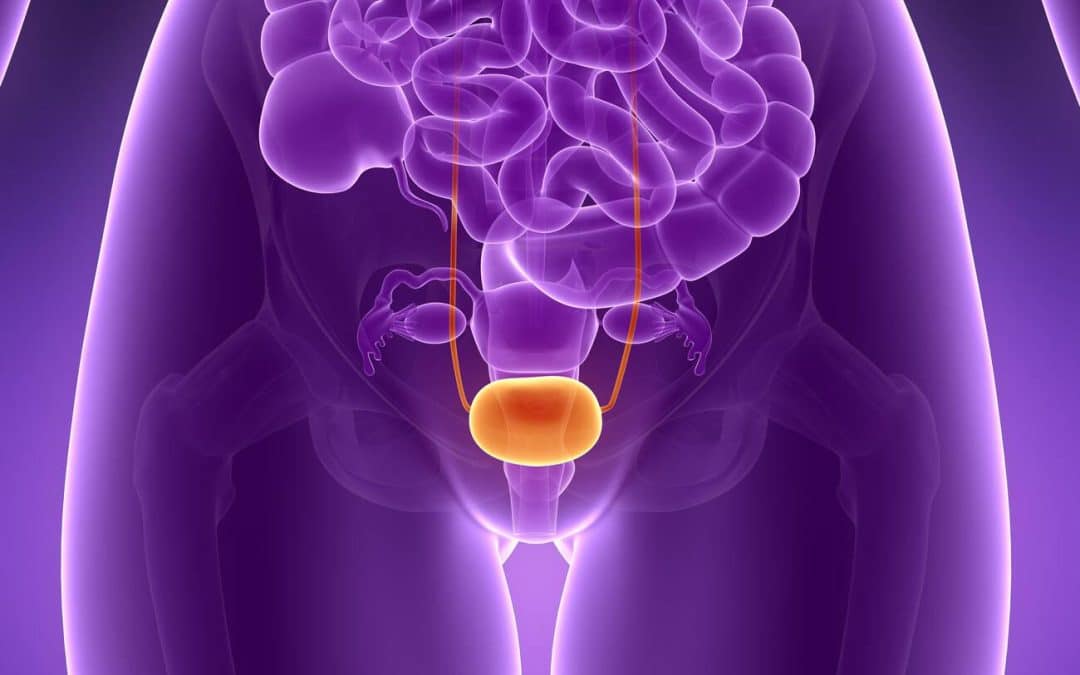
by Michael Zahalsky | Aug 13, 2024 | urology news, Women's Sexual Health
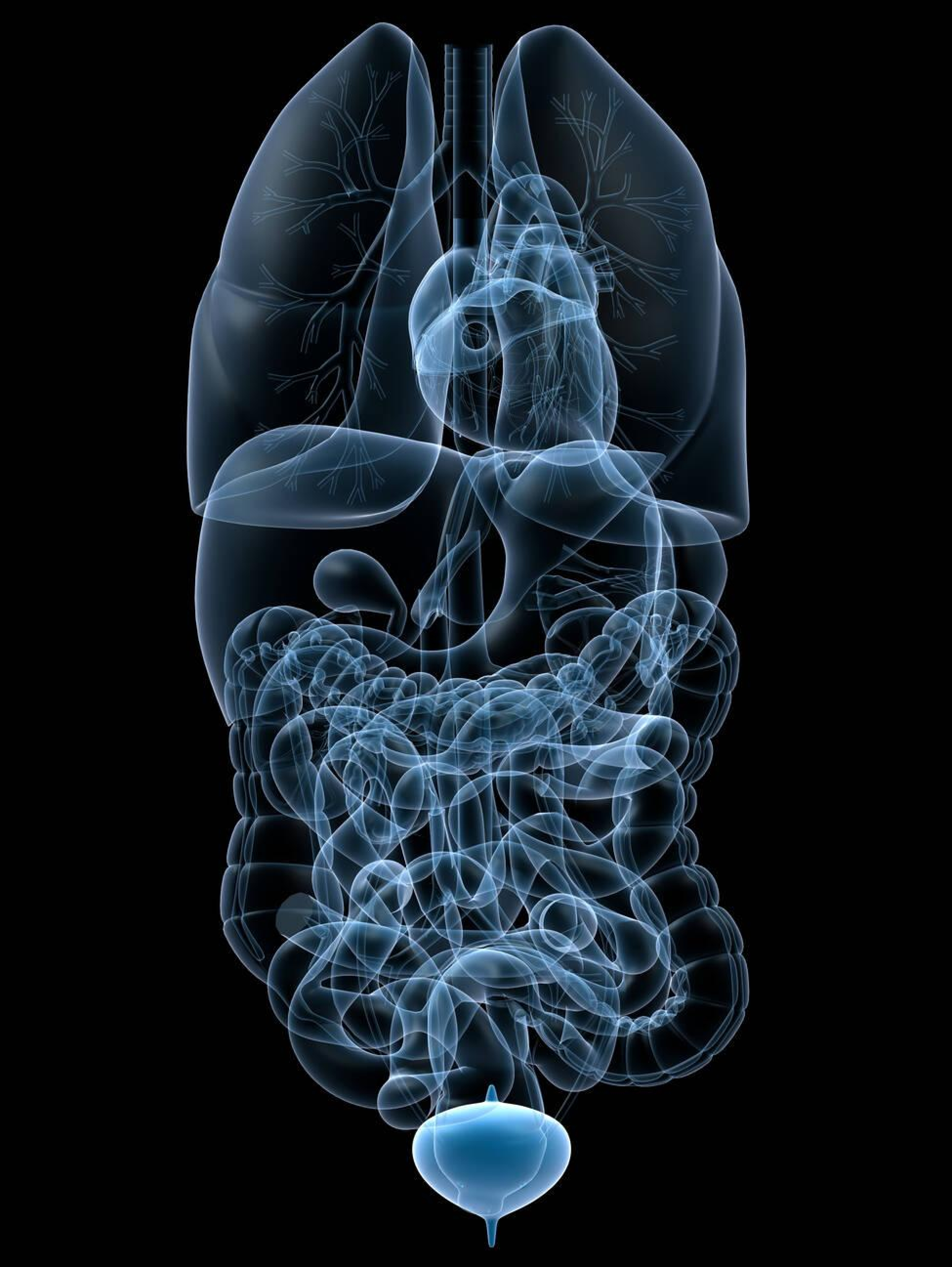
Understanding Urinary Incontinence Slings: A Guide Every Woman Should Read
Urinary incontinence is a challenging and often embarrassing condition affecting millions of women worldwide. Despite being common, it doesn’t have to control your life. For many women, urinary incontinence slings provide an effective solution to regain control and improve quality of life. In this article, we will explore everything you need to know about urinary incontinence slings, from their benefits to the recovery process, and why Z Urology is the premier choice for this treatment.
Urinary incontinence is the involuntary leakage of urine, and it’s particularly prevalent among women, especially after childbirth or as they age. The most common form in women is stress urinary incontinence (SUI), which occurs when physical activities like coughing, sneezing, laughing, or exercising put pressure on the bladder, causing urine to leak.
While lifestyle changes and pelvic floor exercises may help manage mild symptoms, more severe cases often require medical intervention. Urinary incontinence slings offer an effective, minimally invasive solution. These slings are designed to provide support to the urethra, reducing or eliminating leakage by reinforcing the pelvic floor muscles.
Z Urology specializes in these procedures, using state-of-the-art techniques to ensure optimal results. With a team of skilled professionals and cutting-edge technology, Z Urology offers personalized care to help women overcome the challenges of urinary incontinence and reclaim their confidence.
At Z Urology, our focus is on providing compassionate and expert care to address urinary incontinence with the latest treatments available. By choosing Z Urology, you’re selecting a practice that is dedicated to improving your quality of life with tailored solutions that deliver lasting results.
What Are Urinary Incontinence Slings?
Urinary incontinence slings are a surgical treatment option designed to provide support to the urethra and bladder neck, helping to prevent urine leakage. The sling acts as a hammock that lifts and supports the urethra, reducing or eliminating stress incontinence.
Types of Urinary Incontinence Slings
There are two primary types of urinary incontinence slings: midurethral slings and traditional slings. Both types of slings can be highly effective, but the choice of sling depends on the patient’s condition and the surgeon’s recommendation.
- Midurethral Sling:
The midurethral sling is the most common type of sling used to treat stress urinary incontinence. It involves placing a narrow strip of synthetic mesh underneath the urethra. The sling is inserted through small incisions and requires no stitches to hold it in place. Scar tissue forms around the mesh over time, securing it and providing long-term support. The midurethral sling procedure is minimally invasive, usually done on an outpatient basis, and offers a quicker recovery compared to more traditional surgeries.
- Traditional Sling:
Traditional slings are made from either synthetic material or the patient’s own tissue, which is harvested from the abdominal wall or thigh. The sling is placed under the bladder neck, with each end secured in the lower abdomen. Unlike the midurethral sling, traditional slings require more extensive surgery, and the recovery time is longer. This method is typically used when there are more complex anatomical issues or when a more durable solution is needed.
The Benefits of Urinary Incontinence Slings
For women dealing with stress urinary incontinence, urinary slings offer several benefits:
- Effectiveness: Urinary incontinence slings are highly effective, with a success rate of up to 90% in reducing or eliminating urine leakage.
- Minimally Invasive: The midurethral sling procedure, in particular, is minimally invasive and typically takes less than an hour to perform.
- Quick Recovery: Most women can return to normal activities within a few weeks after surgery.
- Long-Term Relief: Once the sling is properly placed, it provides long-term support to the urethra, significantly improving the patient’s quality of life.
What to Expect During the Procedure
The placement of a urinary incontinence sling is typically performed as an outpatient procedure under local or general anesthesia. The surgery usually takes 30 to 60 minutes, depending on the type of sling used and the complexity of the case. During the procedure, the surgeon will make small incisions to insert the sling, which will then be positioned to support the urethra or bladder neck.
Patients can usually go home the same day, and most experience minimal discomfort. However, it’s important to follow your doctor’s post-operative instructions to ensure a smooth recovery.
Recovery and Aftercare
After the urinary incontinence sling procedure, patients may experience some discomfort, including mild pain or bruising at the incision sites. Over-the-counter pain medications can help manage this discomfort. It’s important to avoid strenuous activities, heavy lifting, and sexual intercourse for several weeks to allow the body to heal properly.
Most women can return to work and normal daily activities within one to two weeks, but full recovery may take up to six weeks. During this time, the sling will settle into place, and the scar tissue will form around it, providing the necessary support to stop urine leakage.
Your surgeon will schedule follow-up appointments to monitor your recovery and ensure that the sling is working effectively. If any complications arise, such as difficulty urinating or increased pain, it’s important to contact your healthcare provider immediately.
Why Choose Z Urology for Your Urinary Incontinence Sling Procedure?
At Z Urology, we are dedicated to providing exceptional care and advanced treatment options for women suffering from urinary incontinence. Our board-certified urologists are highly skilled in performing both midurethral and traditional sling procedures, with a focus on patient comfort and successful outcomes. Here’s why Z Urology should be your top choice:
- Expertise and Experience: Our team of urologists has extensive experience in diagnosing and treating female urological conditions, including stress urinary incontinence. We are well-versed in the latest techniques and technologies, ensuring that you receive the highest quality of care.
- Patient-Centered Care: At Z Urology, we prioritize your comfort, well-being, and satisfaction. We take the time to listen to your concerns, explain your treatment options in detail, and develop a personalized plan that meets your unique needs. You’ll never feel rushed or overlooked at our practice.
- State-of-the-Art Facilities: We believe that the best outcomes come from combining expert care with the latest technology. Our state-of-the-art facilities are equipped with cutting-edge diagnostic and surgical equipment, allowing us to provide the most advanced urological treatments available.
- Comprehensive Support: From your initial consultation to post-surgical care, we are with you every step of the way. Our team will provide you with all the information and support you need to ensure a smooth recovery and long-term success.
- Convenient Locations: Z Urology proudly serves the communities of Coral Springs, Parkland, and surrounding areas. With multiple convenient locations, you can easily access the care you need without the hassle of long travel times.
The History of Urinary Incontinence Slings
The development of urinary incontinence slings has evolved over decades, with the goal of providing a reliable and effective solution for women suffering from stress urinary incontinence. Early surgical techniques for incontinence involved complex and invasive procedures, which required longer recovery times and often produced mixed results.
The introduction of the midurethral sling in the late 20th century revolutionized the treatment of stress urinary incontinence. The minimally invasive nature of the procedure, combined with its high success rate, made it the gold standard for treating this condition. Synthetic mesh slings quickly became the preferred option due to their durability and ability to integrate with the body’s natural tissue.
Over the years, advances in materials and surgical techniques have further improved the safety and effectiveness of urinary incontinence slings. Today, women have access to a range of options, allowing them to choose the treatment that best suits their needs.
Take Control of Your Health with Z Urology
If you’re struggling with urinary incontinence, don’t let it control your life any longer. At Z Urology, we offer expert care and advanced treatment options to help you regain control and improve your quality of life. Our compassionate team is here to guide you through every step of the process, from diagnosis to recovery.
Contact Z Urology today to schedule a consultation and take the first step toward a healthier, more confident you. With our expertise, cutting-edge technology, and patient-centered approach, you’re in the best hands. Call us at (954) 714-8200 or visit our website to learn more about our services and schedule your appointment. Let us help you live your life to the fullest again.












Recent Comments